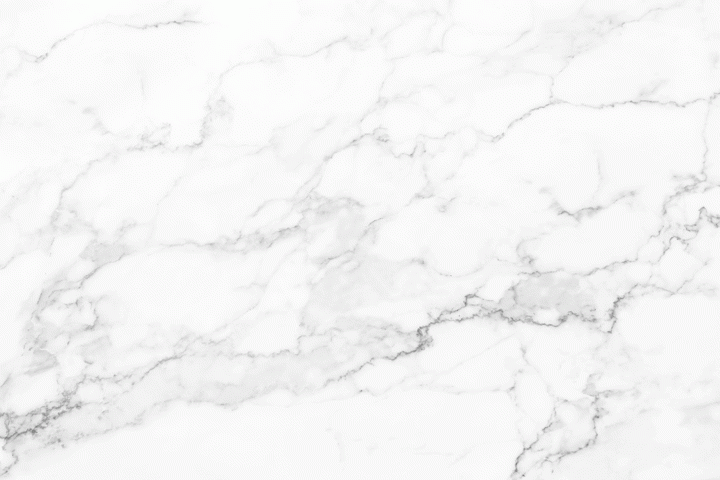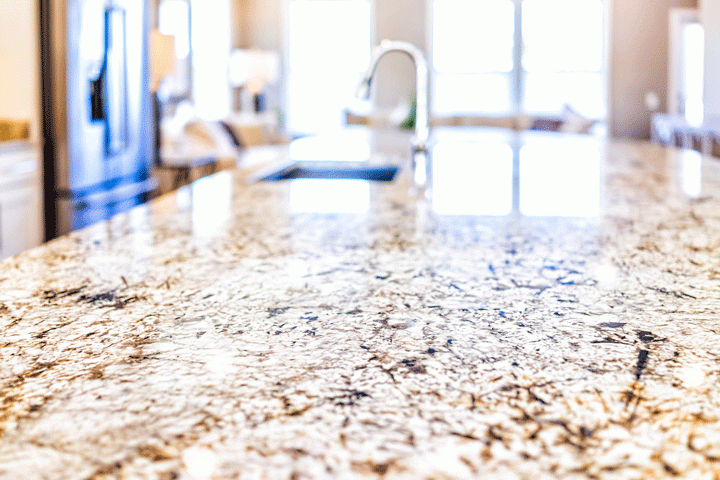
Table of Contents
Marble is one of the most sophisticated and beautiful materials that you can have in your home. This incredible natural stone has traditionally been viewed as a sign of elegance. The material has been used to create everything from marble countertops to some of the most famous statues in the world. The natural beauty the stone exudes is a large part of what makes it so popular among homeowners. But while marble has many positives, it is a porous material – meaning that liquid and stains can easily work their way down into the surface. This guide will provide you with knowledge on what types of stains can occur on marble and how to get rid of those stains.
How to Deal with Spills on Marble
Marble is one of the most porous natural stone materials you can find. With that in mind, you must clean up any spills on the stone immediately. If you leave them sitting on the surface, your marble may sustain permanent damages. However, such damages can be avoided if you act quickly. Wipe the spill with a damp soft cloth.
[get_quote]
How to Get Stains Out of Marble
If simply cleaning the spill does not work and you have a stain, it is not the end of the world. As mentioned with spills, being proactive is a key part of preventing damage due to stains. But before you can remove the stain from your marble, you must first determine what type of stain it is.
What Types of Stains Can Impact Marble?
This guide will cover 8 of the most common stains that marble countertops and other marble surfaces face. These stains are:
-
Oil-Based stains
-
Organic stains
-
Rust stains
-
Water stains
-
Mold stains
-
Ink stains
-
Etch marks
-
Paint stains
Oil-Based stains
Oil-Based stains are caused by many things you have in your home: Cooking oil, grease, milk, butter, hand lotion, etc. These stains will usually appear to be light brown or yellow in color.
Organic stains
Organic stains are some of the most common on marble surfaces. Examples include rings left behind by coffee cups and other household substances. The stains can be light brown to dark brown in color.
Rust stains
Nails, screws and metal cans are a few examples of items that can cause rust stains if left on your marble surfaces. Rust stains are generally copper-colored or brown.
Water stains
Water stains are yet another common stain that occurs on marble. These stains can be the result of a water glass that was left on a marble countertop for too long, or from hard water buildup around sinks and showers.
Mold stains
Mold is a common problem in many bathroom settings. Mold can stain marble bathroom countertops, floors, etc.
Ink stains
Marble countertops and other surfaces are no stranger to ink stains. Ink stains result from pens, highlighters, markers or even wine. The stains are usually water or alcohol based.
Etch marks
Acidic substances are one of marble’s worst enemies. Substances such as lemon juice, orange juice and wine can cause your marble to etch. Etch marks are the result of the top layer of the marble wearing away due to the stain.
Paint stains
Lastly, paint stains are another hazard that marble surfaces face. The stain will typically be the color of the paint that made it. The difficulty to remove the stain will depend on how large it is.
How Can You Remove Stains from Marble?
Most marble stains can be removed by using a homemade solution called a poultice. A poultice is a thick paste that can draw the stain out of your marble. This section will highlight how each of the stains mentioned above can be removed.
Oil-Based stains
Oil-Based stains can be removed with a poultice. This particular poultice will be made with a combination that includes mineral spirits.
Organic stains
Organic stains can be removed with a poultice. This poultice will have 6 percent hydrogen peroxide. Be careful if you are removing a stain from darker colored marble, as hydrogen peroxide can cause the marble to lighten.
Rust stains
Rust stains can usually be removed with a poultice or a non-acidic rust remover. Unfortunately, rust stains are the most difficult of stains to remove from marble. If you try these methods and still do not have success, contact a professional to assess the problem.
Water stains
Water stains can be easily removed from marble. You can either use regular marble cleaner or try removing the stain using Grade 0000 steel wool.
Mold stains
The best way to address mold stains is to use a product that is specifically designed for removing mold and mildew stains on marble, such as this one.
Ink stains
As with organic stains, you can use a poultice made with 6 percent hydrogen peroxide to remove any ink stains.
[get_quote]
Etch marks
Like many other stains that are common on marble, you can remove etch marks using a poultice.
Paint stains
For minor paint stains, you can use lacquer thinner to remove them. For more severe paint stains, consult a professional to determine the best course of action.
How Do You Make a Marble Poultice?
The process of making a marble poultice is very important, considering that most of the stains can be removed using this method. Below are the steps for making and applying the poultice.
| Step 1 |
Combine the required solvent with water or baking soda. Depending on what the specific stain is, the solvent can be 6 percent hydrogen peroxide, mineral spirits, etc. Combine the ingredients until the poultice is the consistency of peanut butter. |
| Step 2 | Clean the area of the stain. Before you apply your poultice, you will need to make sure the area of the stain is clean. Make sure the stained area is slightly wet so that the poultice will be able to penetrate the stone’s surface. |
| Step 3 | Apply the poultice to the stain. The application should be roughly ¼ inch to ½ inch thick. |
| Step 4 | Once the poultice has been applied, cover it with plastic wrap. Secure the plastic wrap with masking tape around the edges. |
| Step 5 | Let the poultice go to work. The poultice will take time to remove the stain. You should typically wait for between 24 to 48 hours before removing the poultice. |
| Step 6 | After waiting the required amount of time, remove the poultice from the surface. You can remove the poultice with a plastic or wooden spatula. Wipe the surface down with a damp cloth and dry it. Do not use any tools that may scratch your marble. |
The poultice operates by working its way down into the stone at the site of the stain. Over time, it pulls the stain right out of the stone. Using a poultice is typically the best way to remove stains from your marble surfaces.
What Happens if You Cannot Get Rid of the Stain?
Do not panic if the poultice doesn't work the first time. If this is the case, try re-applying it and waiting. If it still does not remove the stain, then you should call a professional to seek the best course of action.
What Not to Use for Stain Removal
The last thing you want to do trying to remove a stain from your marble is cause further damage to the stone. To avoid this, never use bleach or other harsh cleaners in an attempt to remove the stain. Harsh cleaners include any products that are acidic. Using cleaners such as these can wear away at the surface of the marble.
How Can You Prevent Staining on Marble?
While marble is one of the most porous materials you will find, there is one major step you can take to cut down on the likelihood of stains: Sealing. If you seal your marble countertop or other surfaces, it will close up the pores and not allow liquid or stains to pass through. Keep in mind that this seal will not last forever. You will typically need to re-seal marble once every few months.
How Do You Seal Marble?
Sealing marble is not a complicated process at all. To start, clear and clean the surface. Next, apply the sealer. Depending on the product, you may need to apply the sealer with a brush or spray it on if it comes in a spray bottle. Apply the sealer to your marble. Make sure to cover the entire surface. After this, wait for 15 minutes while observing the sealer. If all the sealer has absorbed within these 15 minutes, apply an additional coat. After you are done waiting, wipe off the excess sealer and let your marble surface sit for 24 hours.
| Step 1 | Clear off the surface and clean it |
| Step 2 | Apply the sealer |
| Step 3 | Wait for 15 minutes (while observing the sealer) |
| Step 4 | Wipe off the excess sealer |
| Step 5 | Let your marble surface sit for 24 hours before using it |
What Are Some Good Sealers to Use for Marble?
There are many marble and natural stone sealers that you will find out on the market. However, some products are more effective than others. For sealing your marble countertops or other surfaces, you can use products such as Laticrete StoneTech BulletProof Sealer or Superior Zero Ultimate Stone Sealer.
What Other Helpful Tips Should You Know?
Before stains become an issue, make sure that you are keeping up on cleaning and re-sealing. Doing these two simple tasks will reduce the likelihood that you will have to deal with stains. While removing stains can be an easy DIY job, it is not something that you will want to do all the time. Beyond cleaning and re-sealing, make sure that you are exercising caution around your marble surfaces.
[get_quote]
Marble is one of the most beautiful materials that you can install in your home. From bright whites to dark browns and black marble, there are plenty of options to choose from. Marble is a fine example of the beauty that nature can produce. If you treat it properly, this incredible natural stone will reward you with its appearance, durability and numerous other positive qualities for many years to come.
While stains can certainly be avoided, it is not always the worst-case scenario if they occur. By following the steps above, your marble can look as good as new in no time. The key to protecting this beautiful stone is to properly care for it. If you do this, you will have a marble surface that keeps you satisfied.
















 The article helped me immensely
The article helped me immensely
 I’m now more informed on the subject
I’m now more informed on the subject
 I have questions about Marble.com
I have questions about Marble.com
 The article was not accurate at all
The article was not accurate at all
 There is a serious lack of information
There is a serious lack of information
 I have questions about Marble.com
I have questions about Marble.com